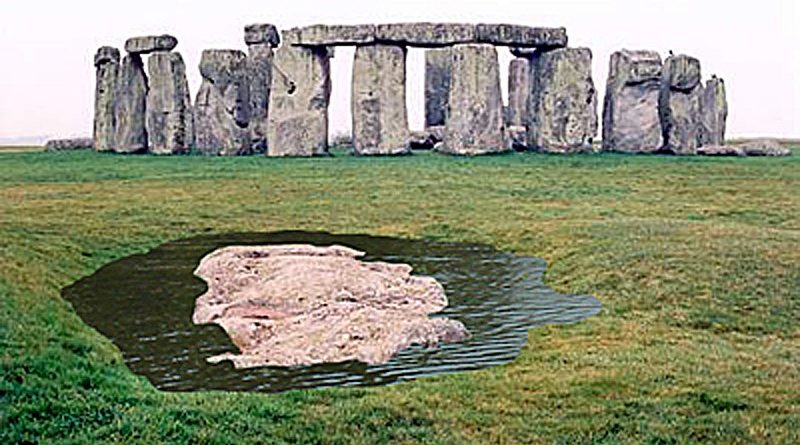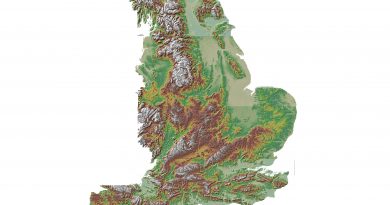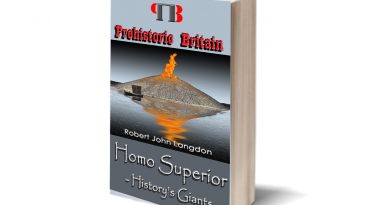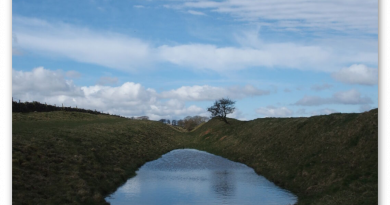On Sunken Lands of the North Sea – Lived the World’s Greatest Civilisation.
After the last ice age, the ‘great melt’ flooded the landscape of Britain for over ten thousand years. This flooding started a chain reaction, and as a consequence, the sea level slowly increased, and vast areas of land were lost, including a landmass known as ‘Doggerland’ -Sunken Lands of the North Sea
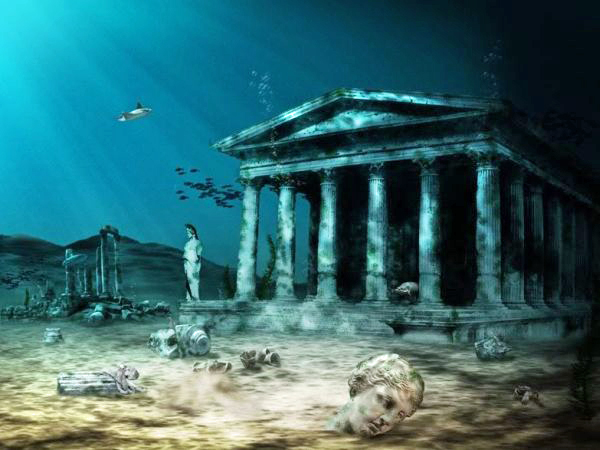
Throughout the 19th Century, oyster dredgers working the shallow waters off the northeast coast of England recorded frequent finds of animal bones caught up in their nets. These discoveries became a regular occurrence as the fishing technology increased and the trawlers later date and in deeper waters of the North Sea found traces of civilisation and a lost continent. Sadly, the location and accuracy are rarely recorded with any degree of accuracy; this material appeared to come from many areas within the North Sea.
One area where the most significant number of finds discovered is known as the ‘Dogger bank’, which lies just 90km – 110km (60-70 miles) from the coast of the British Isles. This shoal (a shoal, sandbar, sandbank or gravel bar is a somewhat linear landform within or extending into a body of water, typically composed of sand, silt or small pebbles.) rises about 45m (150 ft) above the North Sea bed, to the North, it plunges into deeper water and forms a subterranean plateau covering 17,600 sq. km. (6,800 miles) with a maximum dimension being 260km (160 miles) from North to South and 95 km (60 miles) from East to West. Over time, the number of finds reduced as the same area was dredged day after day, and any artefacts sitting on the surface would have been scooped up and either returned as a curiosity or, in a majority of the time, just thrown back in a different location.
Even so, items such as; bear, wolf, hyena, bison, woolly rhino, mammoth, beaver, walrus, elk, deer and most importantly, a horse has been collected. This precious collection of findings gives us a fantastic insight into what Doggerland looked like, the environment that supported these animals and the climate of this unique area of the world. (Sunken Lands of the North Sea)
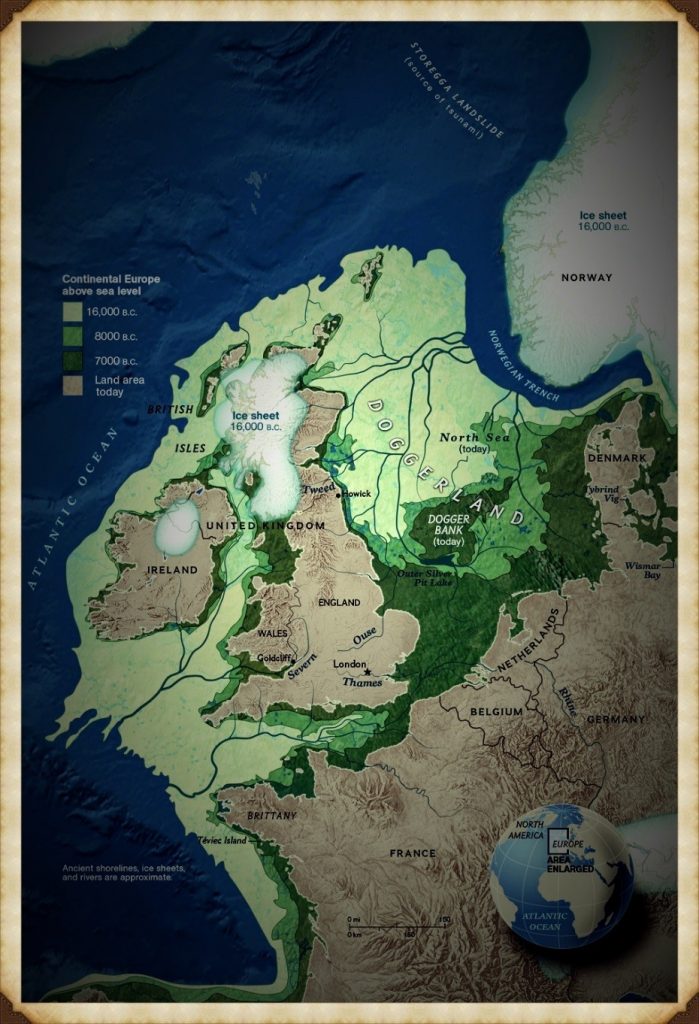
It would be impossible to talk about Doggerland and its environment without understanding if there was a written history of a land that flooded thousands of years ago, and this comes in the works of the ancient Greek
Philosopher Plato. Over the years, Atlantis has grown to be both a legend and the source of many science fictions; this is neither correct nor helpful in tracing the history of humanity, as it moves the debate from scientific observation to fantasy and the degrading of the most critical time of our history.
Plato is a source of creditable information as he is not a ‘storyteller’ like some other historical writers. He is fundamentally a philosopher whose writings are still studied even now, some 2,000 years after his death at the most famous and prestigious universities worldwide. This man is not prone to fantasy or exaggeration; his writings, therefore, must be accepted as valid evidence that once in the distant past, a great ancient civilisation did exist and that they changed the course of humanity in ways which I believe we do not fully understand to date.
Consequently, we need to look at the probability that Plato’s ‘Atlantis’ is a genuine reference to this land, as it is the oldest written source and may give us clues of how this civilisation lived and traded. Fortunately for us, Plato gave some detail about this civilisation, such as how they lived and what they believed, allowing us to compare what we know; from known landscape and archaeological finds and look for more inaccessible areas of investigation the texts might reveal. (Sunken Lands of the North Sea)

Plato’s most famous line from ‘Timaeus’, a dialogue between Critias and Socrates, in which ‘Critias’ tells a story he learned through his family, about the Greek statesman ‘Solon’, whilst he was studying with the most scholarly of Egyptian priests during a visit to Sais in Egypt in about 590 BCE. The priests claimed to have access to secret records about a lost civilisation called ‘Atlantis’, which only they were allowed to read, for it was written on the pillars within their most sacred temple. Now Sais was one of the oldest cities in the ‘old kingdom ‘of Egypt, and the city’s patron goddess was ‘Neith’, whose cult is attested as early as the 1st Dynasty, ca. 3100- 3050 BCE.
The Greeks, such as Herodotus, Plato and Diodorus Siculus, identified her with Athena and postulated a primordial link to Athens. Diodorus recounts that Athena built Sais ‘before’ the ‘deluge’ (flooding) that supposedly destroyed Athens and Atlantis. While all Greek cities were destroyed during that cataclysm, the Egyptian cities, including Sais survived. As we can see from this connection, the deluge has incredible importance to ancient civilisations, clearly indicating that any prehistoric culture that wanted to ‘stay alive’ would possibly build boats, not for some, but for everyone. Sadly, the city of Sais has been recently destroyed by farmers who used the house and temple mud bricks as free fertiliser for the fields – to this date, the temple and its writings have never been found.
The most famous line from Plato’s dialogue is “in front of the mouth which you Greeks say ‘the pillars of Hercules’ there lay an island which is much larger than Libya and Asia together” translated by W.R.M. Lamb 1925 or “in front of the straits which are by you called the pillars of Hercules; the island was bigger than Libya and Asia together” B. Jowett 1871. (Sunken Lands of the North Sea)
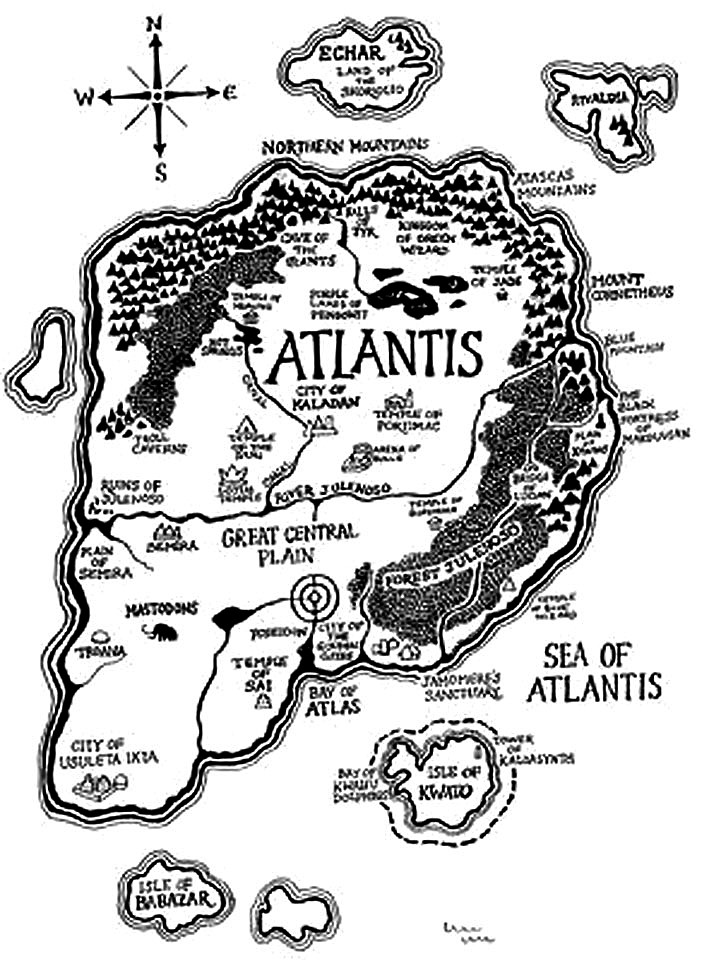
This single sentence has caused no end to the debate about the location of Atlantis. Some suggest that ‘the pillars’ can refer to water flows, thus allowing the speculation (which is current) that Atlantis is a Greek Island. Others suggest (including myself) that the ‘pillars of Hercules’ is the mouth of the Mediterranean between Morocco and Spain. This is a case of translation and interpretation; the word ‘mouth’ is sometimes called ‘strait’; in other quotations, Plato refers to the Mediterranean Sea as “within the straits of Hercules.”
According to some Roman sources, while on his way to the island of ‘Erytheia’ Hercules had to cross the mountain that was once Atlas (the Atlas Mountains are in Northern Africa overlooking the Mediterranean); instead of climbing the great mountain, Hercules used his superhuman strength to smash through it. By doing so, he connected the Atlantic Ocean to the Mediterranean Sea and formed the Straits of Gibraltar. However, the best evidence is in the name itself ‘Atlantis’ for Herodotus (an ancient Greek historian, 484 BCE – c. 425 BCE) in a time before Plato’s writings call the sea outside the Pillars of Hercules the ‘Atlantis Sea’ (Cyrus, 557-530 BCE: Book 1). Moreover, even today, we call it the Atlantic Ocean, and in history, C’s and S’s are commonly transposed.
So we are left with a clear understanding that Atlantis was in the Atlantic Ocean, but then comes the following problem with this description “the island was bigger than Libya and Asia together” this is where most Atlantis claims fall flat. Libya was well-known in Plato’s time as a big country as it bordered the Mediterranean, but the reference to Asia cannot be the Asia we know as it was unknown to the old world and the Greeks; therefore, the Asia that Plato was referring to, is now called Asia Minor.
‘Asia Minor (from Greek: Μικρ σία, Mikrá Asía, small Asia) is a geographical location at the westernmost protrusion of Asia, also called Anatolia, and corresponds to the western two-thirds of the Asian part of Turkey. It is a peninsula bounded by the Black Sea to the North, Georgia to the northeast, the Armenian Highland to the east, Mesopotamia to the south-east, the Mediterranean Sea to the south, and the Aegean Sea to the west.’ (Sunken Lands of the North Sea)
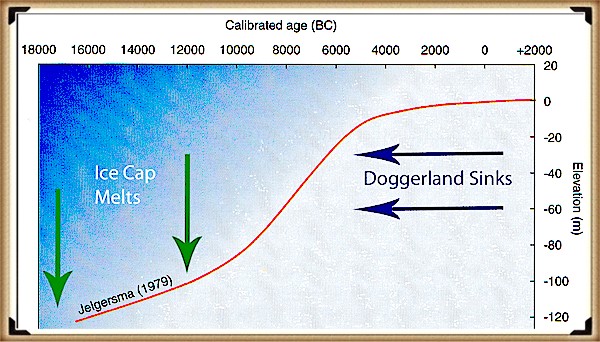
The size of this ‘island’ is consequently a significant problem for historians to date, as the only two island possibilities are the Caribbean in America or a continent that was once in the middle of the Atlantic Ocean that has disappeared without a trace. Well, the Caribbean islands are far too small, and the trek across the middle of the Atlantic Ocean Atlantis Ocean (NEP) without a landmass to guide the ships, eleven thousand years ago, would have been quite daunting with ‘Bronze Age technology’ as Plato suggests.
Some researchers have speculated an island in the middle of the Atlantic between America and Europe, but to date, there has been the only evidence of small islands and nothing to the scale of either Libya or Asia Minor (let alone both!) under the ocean that has sunk in the last 10,000 years according to Plato’s text.
This is why the search has failed, to date, and all various ‘silly’ hypotheses based on the Mediterranean make news headlines. However, if we look again at this passage and the exact wording of Atlantis, we find something most researchers have overlooked in the translation, and it’s the word ‘island’, the original Greek word is ‘nesos’ which can mean either island or peninsula.
If we are looking for a ‘Peninsula’ (which is a piece of land that is bordered by water on three sides but connected to the mainland) that is outside the Mediterranean, then there are only two possibilities – Africa or Europe. These are both outside the Pillars of Hercules and can be easily navigated by sticking to the shorelines. The African continent has shown no signs of any peninsula on its Atlantic side that has disappeared in the past 10,000 years – but Europe has!
If we look at a map of Europe at the end of the Ice Age, we notice that the water levels were about 160m lower than today, so much lower that different coastlines were added to Spain and France. However, when we look at the British Isles, we notice Britain has wholly vanished and been replaced by a new landmass. This ‘peninsula of Europe’ protrudes into the Atlantic Ocean, for the English Channel, Irish Sea and the North Sea as we know it today has been replaced by a single landmass. Moreover, the waters to the west of Ireland and the North West from Scotland have also been reclaimed from the sea.
This peninsula includes Britain, Norway, Sweden and Finland, Denmark, and the Baltic Sea, creating a continent about the same size as Libya and Asia Minor, which correlates to Plato’s writings. (Sunken Lands of the North Sea)
We know from our history that the rising sea waters over the last 10,000 years caused flooding that created the island nation we know today. But, do the writings contain any other information, which will allow us to confirm this peninsula is the landmass Critias is talking about?
Plato adds, “yonder (beyond the pillars of Hercules) is a real Ocean, and the land surrounding it may most rightly be called, in the fullest and truest sense, a continent” in this sentence, the ‘island’ is turned into a ‘continent’ so this proves that the translation of ‘nesos’ is a peninsula, not island. So in today’s terms, we are looking at a landmass that incorporates the British Isles, Scandinavia and the Northern European countries of France, Germany, Holland, Belgium, Poland, Netherlands, Denmark, Lithuania, Latvia, Estonia and the Baltic, North and Irish seas, that were at the time one great landmass, which I call the North European Peninsula (NEP).
Therefore, do the other descriptions of Plato’s Atlantis match this new continent?
He does give us an indication of some other features for this lost continent, “and it is possible for the travellers of that time to cross from it to the other islands and from the islands to the whole of the continent” if NEP is correct, this could mean either one of two different continents. For example, for about 2,000 years (between 10 000 BCE and 8 000 BCE), you could travel from the North-West end of the NEP to the Faroe Islands, which was about five times larger than the islands we know today (due to the drop in sea levels) and then a short hop west to Iceland, which again, for the same reasons, was twice as wide as it is today, then finally, over the short distance to Greenland and then America.
The coastal route would then allow you access to the ‘New World’ down the entire east side of America. However, the most exciting and controversial aspect is that the Atlanteans would have discovered America 11,000 years before Columbus, which may seem far fetched, but it will answer an evolutionary mystery that has confused geneticists and anthropologists for many years. This mystery involves the spread of the A- blood group in Northern American Indians and ancient skeletons with European features and stone tool kits. (Sunken Lands of the North Sea)
In Plato’s writings, other illustrations of Atlantis can now be compared for further comparisons, such as the famous plane of Atlantis. “The whole country was said by him to be very lofty and precipitous on the side of the sea, but the country immediately about and surrounding the city was a level plain, itself surrounded by mountains, which descended towards the sea; it was smooth and even, and of an oblong shape, extending in one direction three thousand stadia, but across the centre inland it was two thousand stadia.”
So the level oblong-shaped plain was surrounded by mountains, which were by the sea, and the plain measured about 250 miles by 350 miles. The current North Sea (Doggerland) would comfortably incorporate a flat plain of that size, sinking below the rising sea levels, for it measures 450 miles by 1200 miles. There are mountains in the North in both Scotland and Norway which ‘descended towards the sea’, not even considering the mountains of Doggerland in the North, which are now the ‘Viking’ and ‘Berger’ sand banks Shetland and Norway.
Another indication that we are talking about a peninsula or part of a continent would be the line’ lofty and precipitous on the side of the sea’ if this was an island, would not ALL sides be on the side of the sea? Our newly discovered Atlantis has one side by the sea where the city and plain lay, and that is in the North, the area we know now as Scotland, Shetland, Orkney across to Norway, where it always rains. (Sunken Lands of the North Sea)
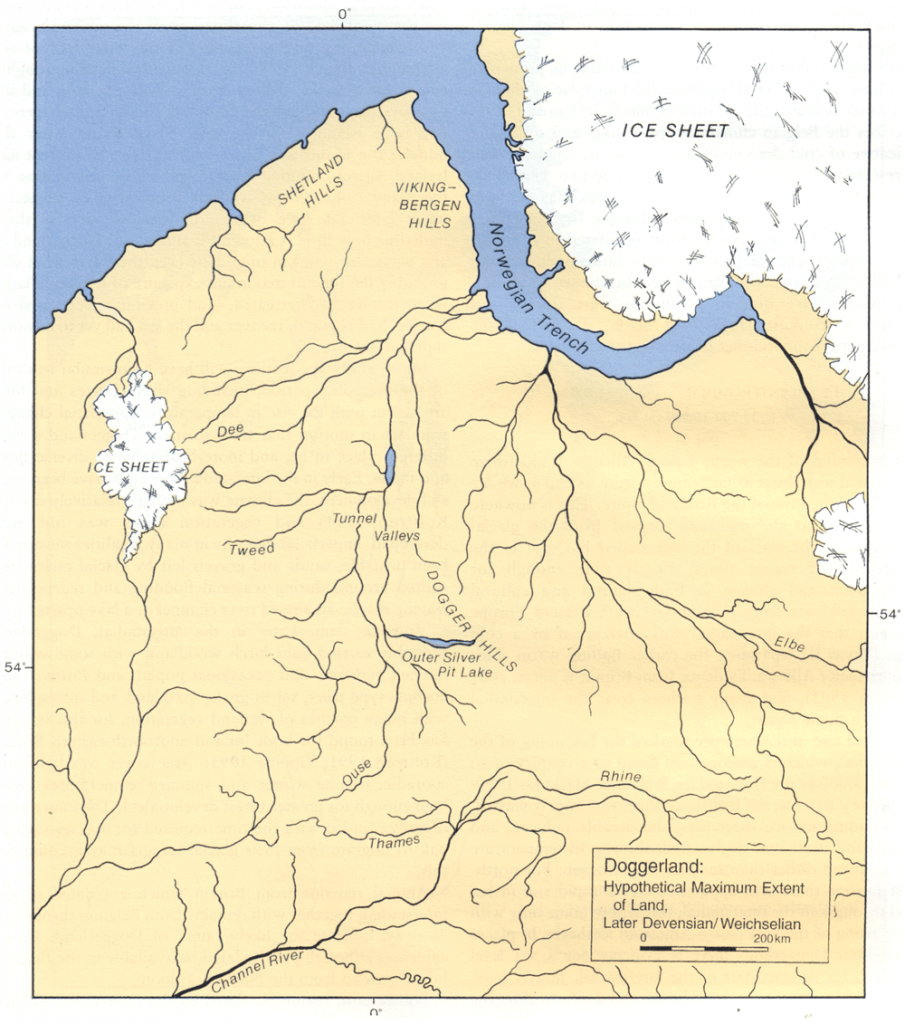
He continues, “This part of the peninsula looked towards the south and was sheltered from the North. The surrounding mountains were celebrated for their number and size and beauty, far beyond any, which still existed, having in them also many wealthy villages of country folk, and rivers, and lakes, and meadows supplying food enough for every animal, wild or tame, and much wood of various sorts, abundant for every single kind of work.” Modern sonar readings of the North Sea floor have shown this land of ‘rivers and lakes and meadows’, and with the mountains, the great plain would naturally face south in the North.
Even when we search the description for the most obscure references to test this hypothesis, we find a correlation; “There was an abundance of wood for carpenter’s work, and sufficient maintenance for tame and wild animals. Moreover, there were a great number of elephants on the island; for as there was the provision for all other sorts of animals, both for those which live in lakes and marshes and rivers, and also for those which live in the mountains and on plains, so there was for the animal which is the largest and most voracious of all.”
Plato is referring to tropical animals such as Elephants and Lions, and anyone living in Britain today would find this unlikely and, therefore, rule out this continent, but again, we found in the catches of North Sea trailer men the bones of Elephants, Mammoths; Lions and Tigers have been found in the last 100 years in Doggerland making this scenario ‘quite probable’ and it would not take much of a stretch of the imagination to classify ‘the largest and most voracious of all’ as the ferocious Sabre-Toothed Tiger, which coincidently went extinct during the ‘Atlantean period’ 14 000 BCE – 4 000BCE. (Sunken Lands of the North Sea)
So we are looking at the civilisation of megalithic builders who once lost their ‘homeland’ and undoubtedly a significant number of friend’s family and loved ones in the deluge. This being the case – how would we expect civilisation to mark such a momentous occasion?
We are a civilisation that has had significant losses through war and tragedy in the past, 9/11 in America we commemorated with a memorial garden, and here in Britain, the casualties of war are remembered by the cenotaph in London, where we come annually to remember the dead with a minute’s silence.
How would future archaeologists view the cenotaph if all written records are lost 10,000 years later – when the wind and rain had wiped the stone monument bear but still resembling the stone pillar it once was?
Radiocarbon dates of post holes in the visitor’s car park that Stonehenge was built about 8 500 BCE as a place for the sick and dead, we also know that the site was remodelled some four to five thousand years later roughly at the time that Atlantis/Doggerland finally ‘disappeared’. So I am suggesting that the new monument continued its commemoration to the dead, but not to the individual dead but the death of Atlantis, which would explain how and why this historically massive construction was erected.
Furthermore, it will explain some of the features of Stonehenge; we have not mentioned to date in this book. The popular view of Stonehenge is of a completely round monument with lintel stones completing the circle – but there is a massive problem, for not all the stones or the stone post holes are present. Some people have suggested that the monument is incomplete, but those individuals do not understand the monument and the reason for its construction.
A monument to the dead does not face the Summer Solstice Sunrise; it meets the Winter Solstice Sunset to mark the shortest day – when light overcomes the darkness, the symbolism of life after death. That being the case, a monument to the dead should face either Winter Sunrise or Winter Sunset, and Stonehenge meets the latter. Another reason to ignore the reference to the Sun is that the Sun is usually a representation of life and a completed circle, where through a crescent, the Moon represents the dead and a crescent. So, the monument would be crescent-shaped and hence the reason for the lack of two stones in the South West Quadrant. (Sunken Lands of the North Sea)
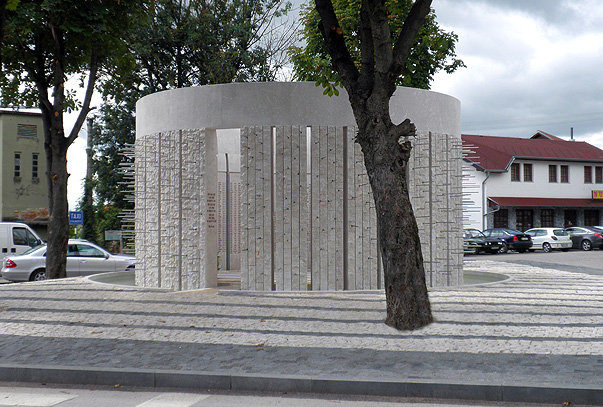
So why is there a horseshoe crescent in the centre of the monument?
The ‘crescent within the crescent’ that faces the Summer solstice sunrise; is very symbolic as it represents reborn or reincarnation, it’s a poignant message through the ages to us (the decedents of the Atlanteans), that their homeland may be dead, but the survivors are still alive and began again. So the ‘open’ end of the horseshoe points to the Solstice Sunrise, but the ‘main’ direction of the symbol points in the opposite direction – the winter solstice sunset. (Sunken Lands of the North Sea)
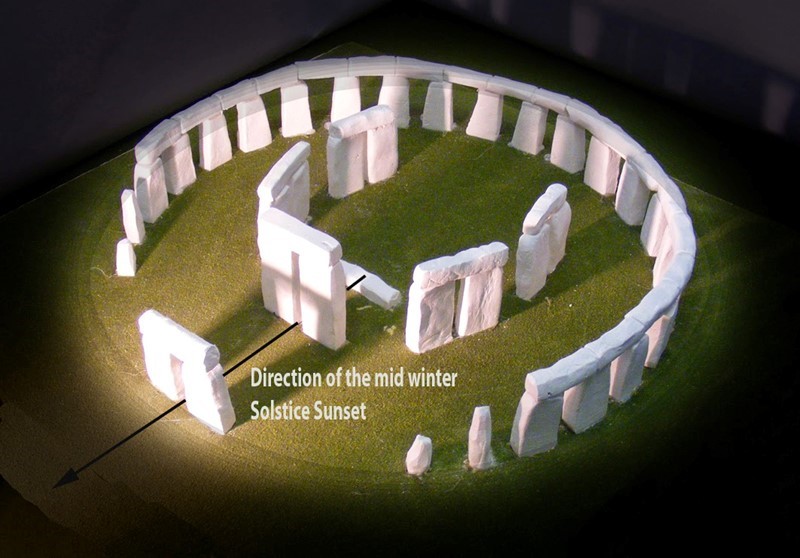
Furthermore, in the centre of the circle lays an exceptional stone – the altar stone, the reason it’s unique is two-fold. Firstly, it’s made of the material unlike the other Sarsen standing stones,
called mica. ‘Hawkins makes note that while all the other stones were either bluestone or Sarsen, the so-called altar-stone is ‘of fine-grained pale green sandstone, containing so many flakes of mica that its surface, wherever freshly exposed, shows the typical mica glitter’ Currently, geologists are trying to locate the source of this sandstone in Wales. Sadly, they are probably looking in the entirely wrong direction as I would imagine it’s from their homeland and currently less than 30m of water in Doggerland.
But this is not the only piece of Sarsen that is made of ‘mica-sandstone’. The most critical component of this special mica-sandstone lies by the moat of the monument to the northeast and is called the ‘Slaughter Stone’ I will not delve into the reason why this stone is called the slaughter stone, but, interestingly, even the druids some 4000 years after the stone was laid into the ground still associated it with death. (Sunken Lands of the North Sea)
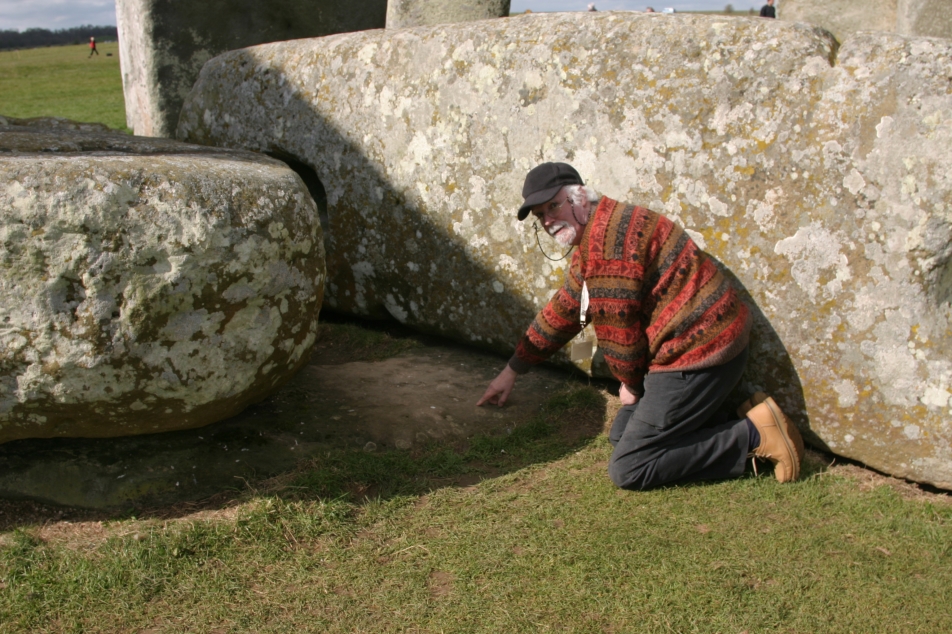
Most archaeologists believe that the slaughter stone was once a standing stone at the monument’s entrance; these flawed ideas are the result of a hypothetical drawing by Inigo Jones in 1655.
This drawing shows Stonehenge as a perfect circle with a hexagon-shaped trilithon interior (a trilithon is two standing stone with a third suspended on top of the two uprights) and three entrances into the site six upright standing stones as access points, which the slaughter stone was one. This idea was incorporated in John Aubrey’s drawing in 1666, which was more accurate, but again tended to place all the fallen stones in upright positions.
This false assumption was further compounded by William Cunning in 1880 when (it was reported) that he suggested his grandfather “saw” the upright slaughter stone in the 17th Century). This mistake was later corrected, yet the myths among archaeologists still remain (Stones of Slaughter, E Herbert Stone, 1924 pp120).
The reality is that the slaughter stone was always (like the Altar Stone) a deliberate recumbent as the excavations of this stone by Hawley and Newall in the 1920s clearly show as the chalk subsoil was also deliberately flattened before it was placed in its current position. Hawley presumed that the Slaughter Stone was once ‘buried’; this idea is understandable as the stone does lay below the ground level, but what Hawley never understood is that the reason the stone was in this position was for the same reason the ditch was built around Stonehenge, as it was made to be full of water. (Sunken Lands of the North Sea)

This can be observed by the size of the stone hole called ‘E’ (WA1165), which lies two metres, North West of the Slaughter stone, but still within the ‘hollow’ that also contains the stone. Most stone holes at Stonehenge are pretty shallow – less than a metre in-depth, but stone hole ‘E’ is twice as deep, over 2m. If the Slaughter stone were placed in it (as some have suggested), it would only be 3m high on the surface, compared to 4.57m for the Heel Stone a few yards away. The only other place in Stonehenge with these more giant pits are within the Ditch section that surrounds the site, which is the same depth allowing access to the groundwater levels
In the past, when the Slaughter stone was placed in this ditch, like the moat, water would have surrounded the stone like an island – what we see today at Stonehenge is a 6,000year-old model of the land we call Atlantis that lay in the current North Sea. (Sunken Lands of the North Sea)
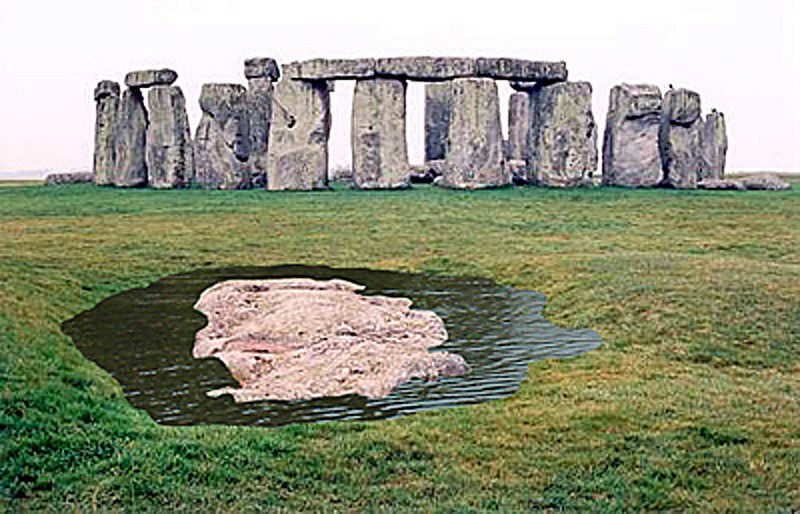
Not only did they place a piece of special mica-sandstone in a watery ditch surrounded by water, but they also carved out the contours of the island, showing high and low ground like a contour release. Archaeologists have always believed these features were ‘weather worn’ by age (although the other recumbent stones have not been weathered in the same fashion), but recent laser technology has confirmed our belief that this stone was carved as the markings from points to Doggerland/Atlantis the tools used can still be seen at microscopic levels.
Finally, and more importantly, the stone has been placed in a unique position, almost in the way of The Avenue. This shows that this stone and the Avenue have a connection, this type of connection we see in association with Egyptian Pyramids when ‘slight lines’ are cut into the sides of the burial chambers to important star constellations to show their associations with the Gods. At Stonehenge, the Slaughter Stone and the Avenue are essential as they link rebirth with the death of this Great Civilisation, for if we look from the Major Sightline stone the Altar Stone and look towards the Slaughter Stone, it is pretty remarkably a direct line POINTING TO the location of Atlantis in the North Sea, a place we now call Doggerland. (Sunken Lands of the North Sea)
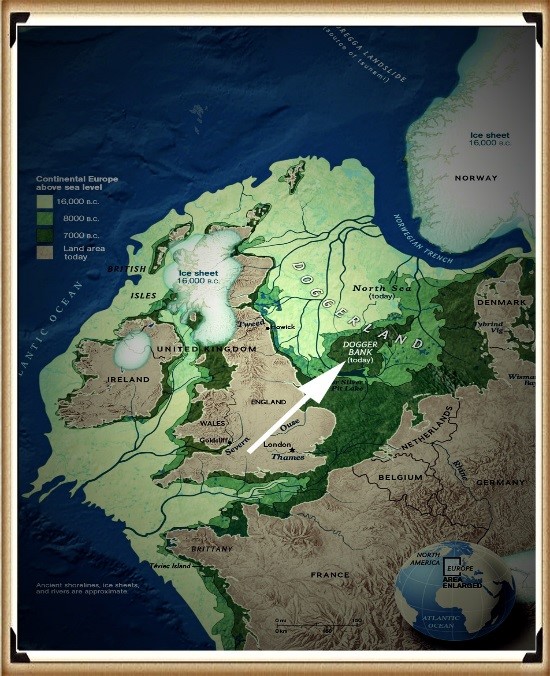
Yet, when you read the two detailed accounts of Plato’s work in ‘The Timaeus’ and ‘Citias’ where some of the narratives are repeated, you get a sense that Plato is talking about two different times of Atlantis’ – the ancient history, with the original landscape and people and then suddenly the demise, flood and war. As we have seen, his dialogue is not fixed in time, or example: “and travellers OF THAT TIME could cross from it to the other islands,” “Many great deluges have taken place during the nine thousand years, for that is the number of years, WHICH HAVE ELAPSED since the time of which I am speaking.”
So are we hearing about the original Atlanteans of 9000 years ago who lived in this green and pleasant land, or are we being told of land that was once great during that time then sunk overnight, leaving nothing? (Sunken Lands of the North Sea)
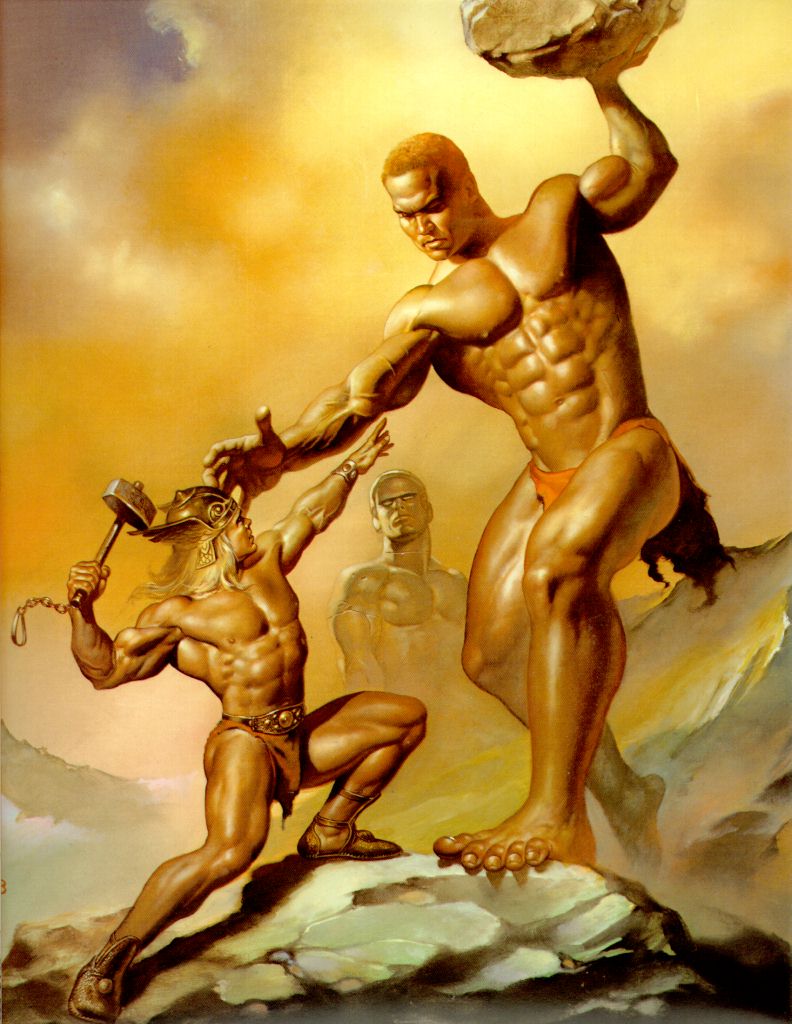
The secret is in the text at the start of the story of Solon and what the Egyptians told him “As for those genealogies of yours which you just now recounted to us, Solon, they are no better than the tales of children. In the first place, you remember a single deluge only, but there were many previous ones; in the next place, you do not know that there formerly dwelt in your land the fairest and noblest race of men who ever lived and that you and your whole city are descended from a small seed or remnant of them, which survived. And this was unknown to you because, for many generations, the survivors of that destruction died, leaving no written word.”
The priests were trying to tell Solon that the Deluge that Greek history remembers was the one that wiped out Athens once and that many such deluges happened in the past – so we can see the confusion with the dates of these floods. Again, we see this two-fold story unveiling with Atlanteans referred to as “in your land dwelt the fairest and noblest race of men who ever lived” does this give us a description of an Atlantean?
We know from DNA that the Scandinavians are descended from blonde and blue-eyed ancestors with pale complexions – this description seems to me to confirm that fact, as when we use the word fair, we generally refer to their hair and features. Moreover, it also shows that two stories are being recited here as within the same book, the Atlanteans are also called “various tribes of Barbarians,” “a mighty power unprovoked”, and “invaders.”
Moreover, does the line “And this was unknown to you, because, for many generations, the survivors of that destruction died, leaving no written word.” Suggest this race had no written language? It is well known that the Nordic races relied on verbal storytelling for their histories; I believe this confirms a ‘Nordic’ Atlantean. However, the most explosive revelation not picked up by most scholars is the line “and that you and your whole city are descended from a small seed or remnant of them, which survived.” So the priests are telling Solon that the Greeks are ‘seeds’ of their great nation. Are they, therefore, implying that they were the first people to colonise Athens and leave their philosophy and beliefs? (Sunken Lands of the North Sea)
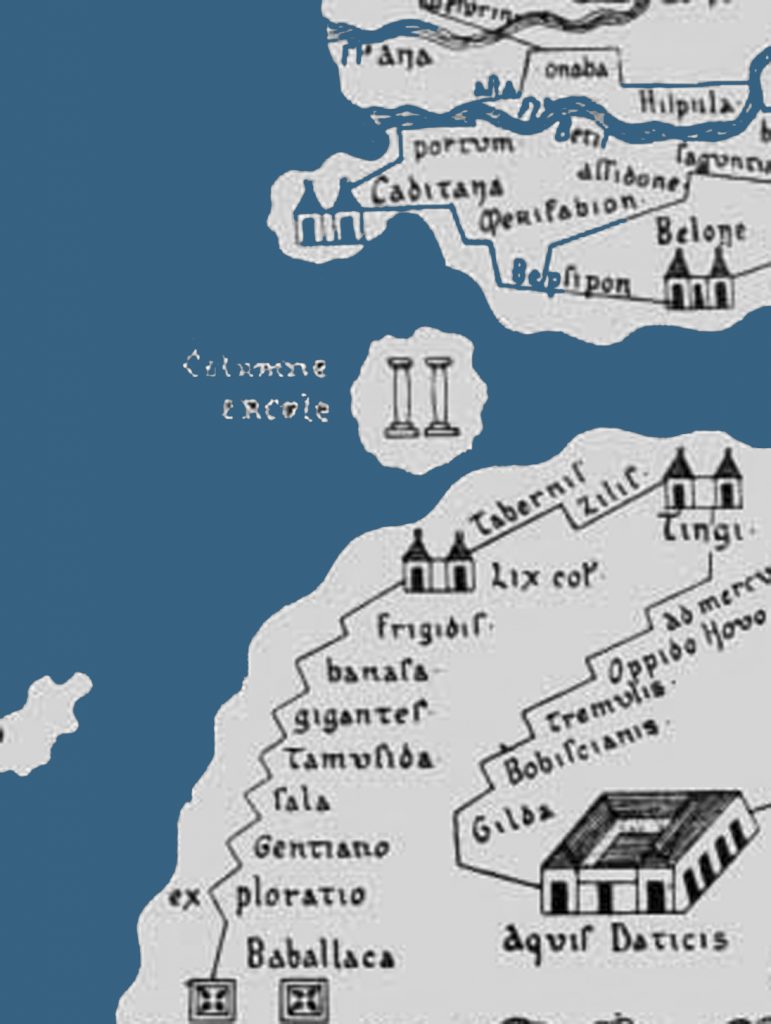
The writing then goes on to say, “Solon marvelled at his words, and earnestly requested the priests to inform him exactly and in order about these former citizens”, and it continues to reinforce this suggestion by saying, “You are welcome to hear about them, Solon, said the priest, both for your own sake and for that of your city, and above all, for the sake of the
goddess who is the common patron and parent and educator of both our cities.” So we now have the Atlanteans’ seeding’ the Greek population and the Egyptian population a thousand years later. The only question left to answer is when, and that is revealed just a paragraph later when he writes, “And the duration of our civilisation as set down in our sacred writings is 8000 years.
“As touching your citizens of nine thousand years ago.” So we have our answer, probably the most astonishing revelation in the history of world civilisation, the Atlanteans “from a distant point in the Atlantic ocean was insolently advancing to attack the whole of Europe and Asia, to boot” in boats from a land beyond the “pillars of Hercules” seeded and established the kingdoms of Greece nine thousand years ago and Egypt a thousand years later.
The interesting aspect of this two-fold story is that some scholars get confused and believe that Atlantis sunk 9000 years ago, when clearly, Plato was talking about the colonisation of Greece and Egypt, and then goes on to talk about the Atlanteans coming to conquer and enslave the Greeks and Egyptians, which is a later date. When he does talk about Atlantis sinking, no dates are offered.
This is when the second story conflicts with the first. Initially, they were “the fairest and noblest race of men which ever lived” but within a paragraph or two become “For these histories tell of a mighty power which unprovoked made an expedition against the whole of Europe and Asia, and to which your city (Athens) put an end. This power came forth out of the Atlantic Ocean, for in those days, the Atlantic was navigable, and there was an island situated in front of the straits which are by you called the Pillars of Hercules…” (Sunken lands of the North Sea)
The dialogue continues, “This vast power, gathered into one, endeavoured to subdue at a blow, our country and yours and the whole of the region within the straits; and then, Solon, your country shone forth, in the excellence of her virtue and strength, among all mankind. She was pre-eminent in courage and military skill and was the leader of the Hellenes. And when the rest fell off from her, being compelled to stand alone, after having undergone the very extremity of danger, she defeated and triumphed over the invaders, and preserved from slavery those who were not yet subjugated, and generously liberated all the rest of us who dwell within the pillars.”
This dichotomy does not make sense unless we are talking about two separate time periods. Nine thousand years ago, Athens was being seeded, and Egypt did even exist as a civilisation for another one thousand years. However, the Atlantean army set forth to conquer and enslave but was defeated by a nation that was in its infancy! Clearly, this shows two stories with independent timelines. With this in mind, we can date the end of Atlantis after the armed conflict and deluge that destroyed Athens.
For Plato writes, “But afterwards there occurred violent earthquakes and floods; and in a single day and night of misfortune, all your warlike men in a body sank into the Earth, and the island of Atlantis, in like manner, disappeared in the depths of the sea. For which reason the sea in those parts is impassable and impenetrable, because there is a shoal of mud in the way; and this was caused by the subsidence of the island.” B.Jowett (1871)
But another interpretation is “But at a later time there occurred portentous earthquakes and floods, and one grievous day and night befell them, when the whole body of your warriors was swallowed up by the earth, and the island of Atlantis, in like manner, was swallowed up by the sea and vanished; wherefore also the ocean at that spot has now become impassable and unsearchable, being blocked up by the shoal mud which the island created as it settled down.” W.R.M.Lamb (1925)
I think the key, here is ‘But afterwards’ or ‘But at a later time’, this was a time period unknown ‘after’ the conflict, and I would imagine that conflict would be many thousands of years after the establishment of Greek and Egypt with independent armies and leadership. We know from geologists that the last piece of Doggerland sank in about 4 000 BCE, which is about the time that the Greece Empire was at its height, and the Atlantis Empire was all but gone, so it’s my opinion this is the time period Plato was referring to. This would also make sense of the line, “For which reason the sea in those parts is impassable and impenetrable, because there is a shoal of mud in the way; and this was caused by the subsidence of the island.” Even today, some 6,000 years later, we refer to the area as the ‘dogger sand bank’.
Finally, there is evidence within Plato’s writing that there was contact with the Atlanteans even after the flood had taken away their major city Atlantis, for a line in Critias talking about the final flood gives us get another clue to the location of this legendry land, for Plato writes, “there are remaining in small islets only the bones of the wasted body, as they may be called, all the richer and softer parts of the soil having fallen away, and the mere skeletons of the country being left.”
So what was left after Doggerland disappeared?
We have to remember this sea-level increase was happening all over the lost continent, so much so that the Irish Sea separated Ireland from Wales; the English Channel was formed separating Britain from mainland Europe, and the North Sea took the last of the peninsulas’ landmass and island to become a vast watery landscape – but the British
In comparison, would you not call that the ‘bones’ of what was formerly there, and does the makeup of this island look like a ‘skeleton of a country’?
Hyperborea
It would be wrong to imagine that Plato’s writings are the only one who mentions an ancient advanced civilisation that lived in prehistory, although he is the only one to mention Atlantis by name. The Greek scholar Herodotus (Histories, Book IV, Chapters 32-36), some 500 years BEFORE Plato, talks about a myth of an ancient land called Hyperborea. Remembering that the Atlanteans had ‘seeded’ this culture in about 9 000 BCE such as myths should be considered, if not as solid as Plato’s works, but just as valid to endorse the location and description of the land, for the more pieces of the jigsaw, we find the clear the picture we will obtain.
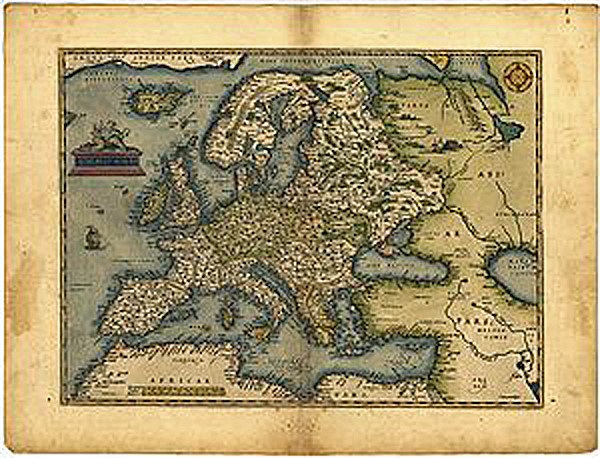
The Hecataeus of Abdera in the 4th Century BCE believed Hyperborea was in Britain as:
“In the regions beyond the land of the Celts there lies in the ocean an island no smaller than Sicily. This island is situated in the North and is habited by Hyperborean’s, who are called by that name because their home is beyond the point whence the north wind blows, and the island is both fertile and productive of every crop and has an unusually temperate climate.”
From Diodorus Siculus (ii.47.1-2). Also, the Sun was supposed to rise and set only once a year – as it does in the North-Eastern area of Atlantis known today as northern Sweden and Norway. Finally, Hecateaus of Abdera wrote that the Hyperborean’s had a ‘circular temple’ on their island – is this Stonehenge or the temple of Apollo on the Plain of Atlantis?
Gothicism ( is the name given to what is considered to have been a cultural movement in Sweden, centred around the belief in the glory of the Swedish ancestors, initially thought to be the Geats, which were identified with the Goths) in the 17th Century in Sweden, declared the Scandinavian peninsula was both Atlantis and Hyperborean land. Ptolemy (Geographia, 2.21) and Marcian of Heraclea (perplus, 2.42) both placed Hyperborea in the North Sea called the ‘Hyperborean Ocean’.
In conclusion, Hyperborea was a wondrous realm of eternal spring located in the far north beyond the land of winter. Its people were tall and blessed, a long-lived race free of war, hard toil, and old age and disease ravages. The land is usually described as a continent-bound land, bordered by the tremendous earth-encircling river to the North (The Atlantic) and the great peaks of the mythical Rhipaion Mountains to the south (The Alps). Its main river was the Eridanos (The Danube), which flowed south, drawing its waters directly from the Okean-stream (The Norwegian Trench). The shores of this stream were lined by amber-bearing poplar trees (as the Baltic Sea is at its source), and its waters inhabited by flocks of white swans. Blessed with eternal spring, the land producing two crops of grain per annum. However, most of the country was wild, covered with rich and beautiful forests, “the Garden of Apollo.”
The Golden Age
According to some modern thinkers (Blavatsky, Guenon and Evola), Hyperborea was the terrestrial and celestial beginning of civilisation. The home of original Man. Some theories postulate Hyperborea was the original ‘Garden of Eden’, the point where the earthly and heavenly planes meet. And it is said man transgressed Divine Law in this ‘Golden Age’ civilisation, the ultimate price being his banishment to the outside world. Man ventured into other regions of Earth, establishing new cultures, bringing this great and glorious Golden Age to an end.
The Golden Age is central to manifold ancient traditions and myths. Significantly, the Golden Age appears most frequent in the traditions of cultures stretching from India to Northern Europe — the area directly beneath the Polar Regions. Joscelyn Godwin, in Arktos, The Polar Myth in Science, Symbolism and Nazi Survival, says:
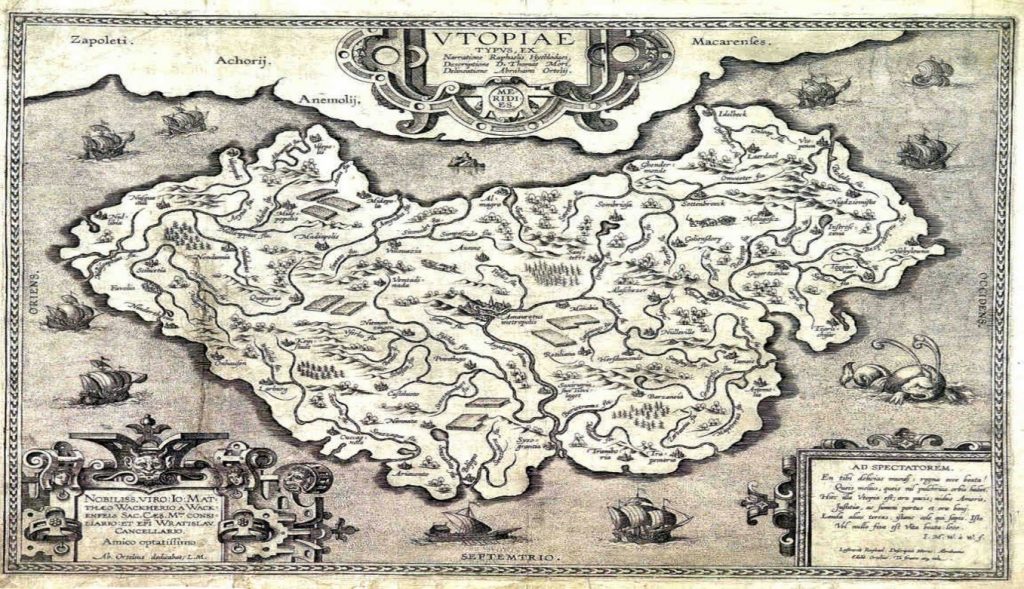
“The memory or imagination of a Golden Age seems to be a particularity of the cultures that cover the area from India to Northern Europe… but in the ancient Middle East, there is an obvious relic of the Golden Age in Genesis, as the Garden of Eden where humanity walked with the gods before the fall. The Egyptians spoke of past epochs ruled by god-kings. Babylonian mythology… had a scheme of three ages, each lasting while the vernal [spring] equinox precessed through four signs of the zodiac; the first of these, under the dominion of Anu, as a Golden Age, ended by the flood. The Iranian Avesta texts tell of the thousand-year Golden Reign of Yima, the first man and the first king, under whose rule cold and heat, old age, death and sickness were unknown.”
Although rendered in an archetypal or mythological form, the memory of a Golden Age serves a super-historical purpose. This is why the remembrance of the ancient civilisation of Atlantis is sometimes enmeshed with that of Hyperborea. All myths are known to have a historical basis. Transmitted primarily by oral tradition, they are wrapped in a catchy and straightforward tale that ensures their survival and transmittal down through the ages. Myth serves a highly vital function — a recollection of our beginnings, knowledge of where we are heading, and what we are supposed to do.
This, I believe, is the final piece of evidence that proves that Doggerland and the NEP were the continent and peninsula referred to in history as Atlantis – The Sunken lands of the North Sea
For further information on ‘Sunken lands of the North Sea’ go to our website or our video channel.
Further Reading
For information about British Prehistory, visit www.prehistoric-britain.co.uk for the most extensive archaeology blogs and investigations collection, including modern LiDAR reports. This site also includes extracts and articles from the Robert John Langdon Trilogy about Britain in the Prehistoric period, including titles such as The Stonehenge Enigma, Dawn of the Lost Civilisation and the ultimate proof of Post Glacial Flooding and the landscape we see today.
Robert John Langdon has also created a YouTube web channel with over 100 investigations and video documentaries to support his classic trilogy (Prehistoric Britain). He has also released a collection of strange coincidences that he calls ‘13 Things that Don’t Make Sense in History’ and his recent discovery of a lost Stone Avenue at Avebury in Wiltshire called ‘Silbury Avenue – the Lost Stone Avenue’.
Langdon has also produced a series of ‘shorts’, which are extracts from his main body of books:
For active discussions on the findings of the TRILOGY and recent LiDAR investigations that are published on our WEBSITE, you can join our and leave a message or join the debate on our Facebook Group.

